3DWarehouse
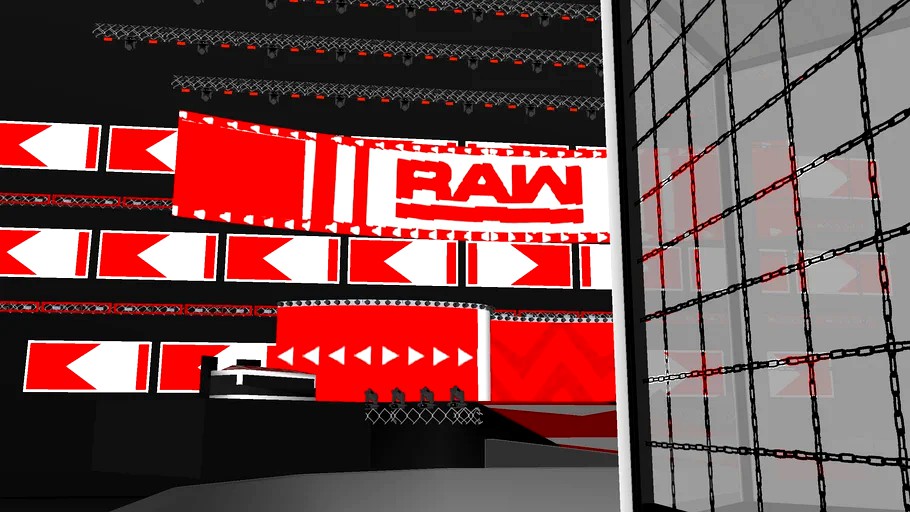
WWE Elimination Chamber/No Escape/Iron Will
by 3DWarehouse
Last crawled date: 9 months, 2 weeks ago
The Elimination Chamber, or the No Escape, which was created by Triple H and introduced by Eric Bischoff for WWE in 2002, is a large, circular steel cage that surrounds the ring entirely, including creating a grated floor area on the apron. Inside the cage, at each turnbuckle, is a clear 'pod' where four of the six competitors in the match must wait to be released to join the two who start at the opening bell. As the name implies, wrestlers are eliminated one-by-one via pinfall or submission until only one remains. An Extreme Elimination Chamber took place at the 2006 December to Dismember pay-per-view, where a weapon was given to each wrestler waiting in a pod. The metal is black and the chambers are made of 'bulletproof glass'. The chamber is 36 feet (11 metres) in diameter and is composed of 16 tons of steel and 2 miles (3.2 kilometres) of chain. Since 2010, WWE held a pay-per-view of the same name every February, featuring this match type as one of its marquee matches. In 2015, this event was replaced with WWE's new pay-per-view event Fastlane. The Elimination Chamber returned as a WWE Network exclusive on May 31 to decide a new WWE Intercontinental Champion and WWE Tag Team Champions. According to a WWE Magazine article in 2009 by WWE's production designer Jason Robinson, who co-designed the structure, several designs for the Elimination Chamber were considered. The structure was manufactured in Colorado Springs, Colorado and took six to eight weeks to make from design blueprints; it cost US$ 250,000 to construct. The structure is made of black-painted steel with an outer structure of 16 frames, each weighing 300 pounds (140 kg). The chamber is 16 ft (4.9 m) high and 36 ft (11 m) in diameter, and weighs a total of 16 short tons (15,000 kg), 10 of which consists of steel. Each inner chamber consists of three large steel framed sheets of plexiglass, costing US$225 per sheet. The chains that surround the chamber stretch 2 mi (3.2 km) long and weigh 6 short tons (5,400 kg). A 50 ft (15 m) flatbed truck is needed to transport the chamber. Assembly in the arena takes eight hours to complete, and eight motors are used to suspend the structure over the ring before each event. When not in use, the structure is stored at a dock in Newark, New Jersey. Unlike standard steel cage matches and Hell in a Cell matches, Elimination Chamber matches cannot be held at several arenas due to the structure's massive size and weight, similar to how WarGames matches could only be held at certain arenas. This would play a factor in WWE dropping the annual Elimination Chamber pay-per-view event. In 2017, Elimination Chamber was brought back as a SmackDown exclusive pay-per-view. In addition, the chamber structure was redesigned, becoming square instead of circular. The pods were also changed from circular to square and feature sliding doors that referees slide open from outside the chamber. At the top of the chamber at its center, which is now 26 ft (7.9 m) tall, is a large cutout of the WWE logo. Also, the steel grates between the ring and the cage were replaced with padding. LED lights also line the corners of the structure. The redesign was for practical purposes due to certain venues only being able to house the previous structure. The fifth match, held by the ECW brand at December to Dismember, was a slight variation called the 'Extreme Elimination Chamber'. In this variation, each chamber had one of four weapons for the competitors locked inside to hold on to. When each competitor's chamber opened, their weapon entered the match with them. The four weapons used in the match were a crowbar, a table, a steel folding chair, and a barbed wire-wrapped baseball bat. The 2015 Elimination Chamber event saw another slight variation of the match: the tag team chamber match. Both team members were inside of their respective pods, for a total of six tag teams in the match. The 2018 Elimination Chamber featured the first seven-man chamber match. Due to the extra person, three competitors started the match instead of two. as well as New Women's Chamber Match was featured. Credits goes to 5hAwnMichael for the everything included escept for the Steps I've made to enter the chamber nearby the Ramp as modification. Same thing done second time by separating Openable Doors to made it openable for entring in Structure even in prods. RAW Arena used in this model to indicate Recent Pay Per View of 2018. THE HOLOCAUST GERMANY 1941-1945: The Holocaust, also referred to as the Shoah, was a genocide during World War II in which Adolf Hitler's Nazi Germany, aided by its collaborators, systematically murdered some six million European Jews, around two-thirds of the Jewish population of Europe, between 1941 and 1945. Jews were targeted for extermination as part of a larger event involving the persecution and murder of other groups, including in particular the Roma and 'incurably sick', as well as political opponents, gay men, Jehovah's Witnesses, ethnic Poles and Soviet prisoners of war. Germany implemented the persecution in stages. Following Hitler's rise to power in 1933, the government passed laws to exclude Jews from civil society, most prominently the Nuremberg Laws in 1935. Starting in 1933, the Nazis built a network of concentration camps in Germany for political opponents and people deemed 'undesirable'. After the invasion of Poland in 1939, the regime set up ghettos to segregate Jews. Over 42,000 camps, ghettos, and other detention sites were established. The deportation of Jews to the ghettos culminated in the policy of extermination the Nazis called the 'Final Solution to the Jewish Question', discussed by senior Nazi officials at the Wannsee Conference in Berlin in January 1942. As German forces captured territories in the East, all anti-Jewish measures were radicalized. Under the coordination of the SS, with directions from the highest leadership of the Nazi Party, killings were committed within Germany itself, throughout German-occupied Europe, and across all territories controlled by the Axis powers. Paramilitary units called Einsatzgruppen murdered around two million Jews in mass shootings in less than a year. By mid-1942, victims were being deported from the ghettos in sealed freight trains to extermination camps where, if they survived the journey, they were killed in gas chambers. The killing continued until the end of World War II in Europe in April–May 1945. Killing on a mass scale using gas chambers or gas vans was the main difference between the extermination and concentration camps. From the end of 1941, the Germans built six extermination camps in occupied Poland: Auschwitz II-Birkenau, Majdanek, Chełmno, and the three Operation Reinhard camps at Belzec, Sobibor, and Treblinka II. Maly Trostenets, a concentration camp in the Reichskommissariat Ostland, became a killing centre in 1942. Gerlach writes that over three million Jews were murdered in 1942, the year that 'marked the peak' of the mass murder of Jews. At least 1.4 of these were in the General Government area of Poland. Using gas vans, Chełmno had its roots in the Aktion T4 euthanasia program. Majdanek began as a POW camp, but in August 1942 it had gas chambers installed. A few other camps are occasionally named as extermination camps, but there is no scholarly agreement on the additional camps; commonly mentioned are Mauthausen in Austria and Stutthof. There may also have been plans for camps at Mogilev and Lvov. Victims usually arrived at the camps by train. Almost all arrivals at the Operation Reinhard camps of Treblinka, Sobibór, and Bełżec were sent directly to the gas chambers, with individuals occasionally selected to replace dead workers. At Auschwitz, the camp officials usually subjected individuals to selections, and some of the new arrivals deemed fit to work were sent to slave labour. Those selected for death at all camps were told to undress and hand their valuables to camp workers. They were then herded naked into the gas chambers. To prevent panic, they told the gas chambers were showers or delousing chambers. The procedure at Chełmno was slightly different. Victims there were placed in a mobile gas van and asphyxiated, while being driven to prepared burial pits in the nearby forests. There the corpses were unloaded and buried. At Auschwitz, after the chambers were filled, the doors were shut and pellets of Zyklon-B were dropped into the chambers through vents, releasing toxic prussic acid, or hydrogen cyanide. Those inside died within 20 minutes; the speed of death depended on how close the inmate was standing to a gas vent, according to the commandant Rudolf Höss, who estimated that about one-third of the victims died immediately. Johann Kremer, an SS doctor who oversaw the gassings, testified that: 'Shouting and screaming of the victims could be heard through the opening and it was clear that they fought for their lives.' The gas was then pumped out, the bodies were removed, gold fillings in their teeth were extracted, and women's hair was cut. The work was done by the Sonderkommando, work groups of mostly Jewish prisoners. At Auschwitz, the bodies were at first buried in deep pits and covered with lime, but between September and November 1942, on the orders of Himmler, they were dug up and burned. In early 1943, new gas chambers and crematoria were built to accommodate the numbers. Auschwitz II1,100,00050°2′9″N 19°10′42″E Bełżec600,00050°22′18″N 23°27′27″E Chełmno320,00052°9′27″N 18°43′43″E Majdanek78,00051°13′13″N 22°36′0″E Maly Trostinets65,00053°51′4″N 27°42′17″E Sobibór250,00051°26′50″N 23°35′37″E Treblinka870,00052°37′35″N 22°2′49″E At the three Reinhard camps the victims were killed by the exhaust fumes of stationary diesel engines. Gold fillings were pulled from the corpses before burial, but the women's hair was cut before death. At Treblinka, to calm the victims, the arrival platform was made to look like a train station, complete with fake clock. Majdanek used Zyklon-B gas in its gas chambers. In contrast to Auschwitz, the three Reinhard camps were quite small. Most of the victims at these camps were buried in pits at first. Sobibór and Bełżec began exhuming and burning bodies in late 1942, to hide the evidence, as did Treblinka in March 1943. The bodies were burned in open fireplaces and the remaining bones crushed into powder. In Germany, WWE refers to this match as a 'No Escape' match because of fears over a reference to gas chambers in The Holocaust. In July 2010, WWE released Satan's Prison: The Anthology of the Elimination Chamber, a DVD featuring every Elimination Chamber match as of Elimination Chamber 2010. The European release of the DVD is titled Iron Will, primarily over the name change of the structure, match type, and pay-per-view in Germany to avoid a brand blunder with the 'Elimination Chamber' name, as it may create imagery of gas chambers during The Holocaust. (The Elimination Chamber pay-per-view, structure, and match are called 'No Escape' in Germany.) #entertainment #Live #Monday #Night #RAW #world #wrestling #WWE #Iron #Will #No #Escape #Elimination #Chamber
Similar models
3dwarehouse
free

treblinka death camp
... slaughterd from 1942-1943, 300,000 of which were children, lest we forget the victims of the holocaust #extermination #nazi #war
3dwarehouse
free

holocaust memorial
...000 #auschwitz #belzec #chelmno #dachau #dead #holocaust #jew #madeneck #memorial #nazi #respect #six_million #sobibor #treblinka
3dwarehouse
free

belzec nazi extermination camp
...the victums, sobibor and treblinka are to come yet, these are the most accurate models i have made. #hitler #holocaust #jew #nazi
3dwarehouse
free

sobibor extermination camp
..., there was a prisoner revolt on october the 14th 1943. never forget the victums of the holocaust #holocaust #jew #nazi #remember
3dwarehouse
free
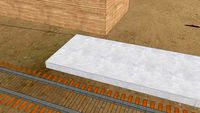
Belzec Death Camp Winter Dec 1942
...arehouse
belzec a nazi death camp where an estimated 434,000 jews and some romanis were systematically murdered in gas chambers.
3dwarehouse
free

treblinka work camp, (penal ) camp
... wich means only 20 lived. it was here that the rebelion started in 1942. #death #hitler #holocaust #jew #labour #nazi #treblinka
3dwarehouse
free

treblinka extermination camp memorial
...nted the camp and planted the area with trees. foundationsd at the work camp 2 kms away are still visable. #holocaust #jews #nazi
3dwarehouse
free

maideneck mausoleum
... cremetorium. lets never for get the victums of the holocaust #chevin #holocaust #jew #jews #maideneck #majdaneck #memorial #nazi
3dwarehouse
free

Stacja Radogoszcz - muzeum cz.3
...ross rosen and stutthof. now museum of remembrance for a victims of ghetto. #getto #ghetto #muzeum #radegast #radogoszcz #victims
3dwarehouse
free

Stacja Radogoszcz - muzeum cz.1
...ross rosen and stutthof. now museum of remembrance for a victims of ghetto. #getto #ghetto #muzeum #radegast #radogoszcz #victims
Wwe
turbosquid
$1

wwe undertaker urn
...
royalty free 3d model wwe undertaker urn for download as obj on turbosquid: 3d models for games, architecture, videos. (1600626)
turbosquid
$3

wwe stunt animated
... available on turbo squid, the world's leading provider of digital 3d models for visualization, films, television, and games.
3d_export
$5
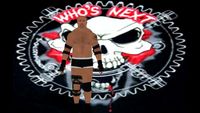
Goldberg 3D Model
...goldberg 3d model 3dexport wwe wrestling nfl goldberg 3d model fanboy10927742 86210...
3d_export
$5

Brock Lesner 3D Model
...brock lesner 3d model 3dexport wwe ufc tna champion brock lesner 3d model fanboy10927742 86209...
3d_export
$54

Boxing Ring 3D Model
...ring fight box stage boxer kickboxing sport platform rope wwe wwf mat sparring championship max vray venue boxing ring...
cg_studio
$49

Boxing Ring 23d model
...ring fight box stage boxer kickboxing sport platform rope wwe wwf mat sparring championship .3ds .obj .max .fbx -...
thingiverse
free

wwe by 29paulotto
...lotto
thingiverse
wwe plaque created in tinkercad and printed in two colors using a filament change on a makerbot replicator 2.
thingiverse
free

WWE Bray Wyatt Rocking Chair For WWE Actions Figures by TheAwesomerEgger
...wwe bray wyatt rocking chair for wwe actions figures by theawesomeregger
thingiverse
a rocking chair prop for wwe action figures
thingiverse
free

WWE ladder by quicksilverrobotics
...ilverrobotics
thingiverse
my little brothers wanted a ladder to play with their wwe action figures with. i made this on invetor.
free3d
free

WWE Smoking Skull Championship
...wwe smoking skull championship
free3d
wwe smoking skull championship belt
Escape
turbosquid
$25
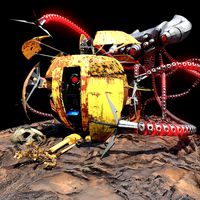
Robot escape
...squid
royalty free 3d model robot escape for download as max on turbosquid: 3d models for games, architecture, videos. (1395249)
turbosquid
$10

Fire Escape
...osquid
royalty free 3d model fire escape for download as max on turbosquid: 3d models for games, architecture, videos. (1406933)
turbosquid
$1

Fire Escape
...quid
royalty free 3d model fire escape for download as blend on turbosquid: 3d models for games, architecture, videos. (1568818)
turbosquid
free

Fire Escape
... available on turbo squid, the world's leading provider of digital 3d models for visualization, films, television, and games.
turbosquid
free
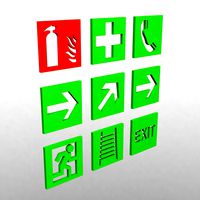
Escape Signs
... available on turbo squid, the world's leading provider of digital 3d models for visualization, films, television, and games.
design_connected
$18

Escape Sun Lounger
...escape sun lounger
designconnected
cane-line escape sun lounger computer generated 3d model.
turbosquid
$45

Fire Escape 2
...quid
royalty free 3d model fire escape 2 for download as fbx on turbosquid: 3d models for games, architecture, videos. (1506959)
turbosquid
$1
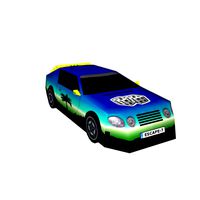
Escape sports car
...odel escape sports car for download as jpg, 3ds, obj, and md3 on turbosquid: 3d models for games, architecture, videos. (1500588)
turbosquid
$29

Fire Escape Stairs
... available on turbo squid, the world's leading provider of digital 3d models for visualization, films, television, and games.
turbosquid
$12

ROYAL ESCAPE CRAFT
... available on turbo squid, the world's leading provider of digital 3d models for visualization, films, television, and games.
Elimination
turbosquid
$25

Finger Eliminator 2000
... available on turbo squid, the world's leading provider of digital 3d models for visualization, films, television, and games.
3d_export
$20

mercury cougar eliminator
...s.<br>car textures:png - 2k resolution other available formats: obj, 3ds, fbx, stl, max. polycount: 33335 poly / 31902 tris
3d_export
$2

axe
...axe
3dexport
this is my first job! this battle axe is for eliminating your enemies. it has a dangerous edge. be careful with it.
cg_studio
$1

Eliminator3d model
...eliminator3d model
cgstudio
.max - eliminator 3d model, royalty free license available, instant download after purchase.
3d_export
$10

scifi camera battle drone
...mera battle drone
3dexport
camera battle drone - a small autobot used for scouting, spying or patroling and eliminating enemies.
3d_export
$5

the plate for cranioplasty real example
...a congenital malformation of the skull bones. this example is like a sample of 3d printing of a real plate for a specific patient
3d_export
$5
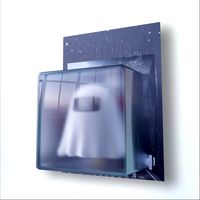
Among Us Ghost Halloween
... or if all tasks are completed. imposters win if they are equal in number to the crew, or if a critical sabotage is not resolved.
3d_ocean
$6

Rigged and Textured Wallet with Money
...deled and rigged in maya 2014. the model folds with a rig that eliminates overlaps between the separate wallet and bill meshes...
3ddd
free
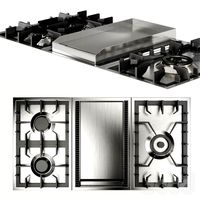
ILVE_COOKTOP
... gas types.
with stabilized flame, they eliminate eventual
flame extincions due to draught or liquid overflow.
triple ring burner
3d_export
$10

Ancient Egyptian Sphinx
...cludes all scenes, lightings, cameras, materials and textures. many file formats are available. the visuals are in 4k resolution.
Chamber
turbosquid
$15
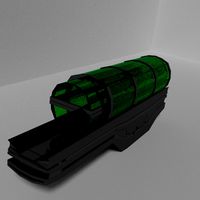
Chamber
...rbosquid
royalty free 3d model chamber for download as blend on turbosquid: 3d models for games, architecture, videos. (1240986)
3d_export
$6

Chamber
...chamber
3dexport
squish dumpling avatars of the valorant agents.
turbosquid
$53
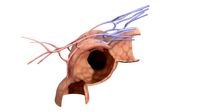
Alveolus Chamber
... available on turbo squid, the world's leading provider of digital 3d models for visualization, films, television, and games.
turbosquid
free

Underground chamber
... available on turbo squid, the world's leading provider of digital 3d models for visualization, films, television, and games.
turbosquid
free
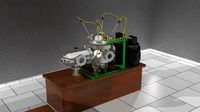
Vacuum chamber
... available on turbo squid, the world's leading provider of digital 3d models for visualization, films, television, and games.
turbosquid
$10
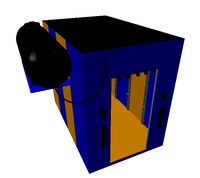
disinfection chamber
...on chamber for download as blend, 3ds, dae, fbx, obj, and stl on turbosquid: 3d models for games, architecture, videos. (1671962)
3d_export
$25
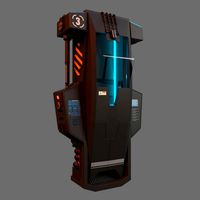
Hypersleep Chamber
..., the users are usually clad in either sleepwear or underwear to prevent clothes and/or armor to become frozen to the users body.
turbosquid
$2

Xenomorph Incubation Chamber
...y free 3d model xenomorph incubation chamber for download as on turbosquid: 3d models for games, architecture, videos. (1705895)
3d_export
$7

chambers bar stools
...chambers bar stools
3dexport
name:
turbosquid
$59

Chamber Pendant Light
...yalty free 3d model chamber pendant light for download as max on turbosquid: 3d models for games, architecture, videos. (1291559)
Iron
archibase_planet
free

Iron
...ase planet
iron flatiron flat iron smoothing-iron
iron scarlett sc1133s n260112 - 3d model (*.3ds) for interior 3d visualization.
archibase_planet
free
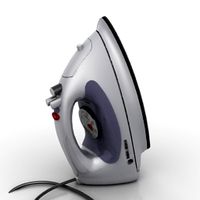
Iron
...et
iron flatiron flat iron smoothing-iron
iron black & decker n131213 - 3d model (*.gsm+*.3ds) for interior 3d visualization.
3ddd
free

Iron
...mbo-unlimitedideas.com/produtos_post/iron-console/
в архиве сцена 2011 и 2014, fbx и obj, текстуры
рендер: vray 2.4
3d_ocean
$15
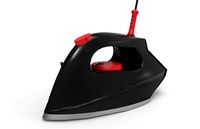
Steam iron
...ign made by me. you can use it for your projects and games as you want. iron, steam iron, philips,siemens, clothes,ironing, tefal
turbosquid
$8
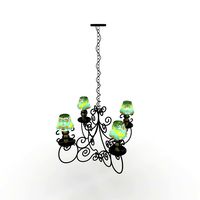
Iron Chandelier - Iron Chandelier
... available on turbo squid, the world's leading provider of digital 3d models for visualization, films, television, and games.
turbosquid
$35

iron
...on
turbosquid
royalty free 3d model iron for download as max on turbosquid: 3d models for games, architecture, videos. (1365250)
3d_export
$20
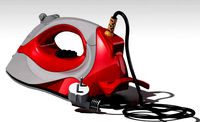
iron press
...iron press
3dexport
iron press
3d_export
$5

old iron
...old iron
3dexport
old iron
3d_export
free

iron man
...iron man
3dexport
iron man
3d_export
$49

Iron Giant
...iron giant
3dexport
iron giant film
